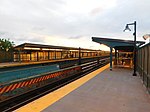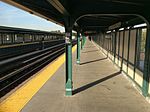New York City Federation of Black Cowboys

The New York City Federation of Black Cowboys (FBC) is an organization dedicated to horsemanship training, children's education, and keeping alive the traditions of African-American cowboys from the Old West. It is located in The Hole, a low-lying neighborhood on the border of Brooklyn and Queens in New York City. The FBC participates in educational tours, youth horseback riding training, and public events such as riding horseback for 8 hours "from one end of Brooklyn to the other."During the 1870s and 1880s, African-American cowboys made up approximately 25% of the 35,000 cowboys in the Western Frontier. The Federation honors this legacy through youth programs, rodeos, and school visits, while also using horsemanship to teach local youth life skills such as patience, kindness, and tolerance.As of 2019, the organization's president is Kesha "Mama" Morse. She is the organization's first female president.
Excerpt from the Wikipedia article New York City Federation of Black Cowboys (License: CC BY-SA 3.0, Authors, Images).New York City Federation of Black Cowboys
78th Street - Sapphire Street, New York Queens County
Geographical coordinates (GPS) Address Nearby Places Show on map
Geographical coordinates (GPS)
| Latitude | Longitude |
|---|---|
| N 40.669978 ° | E -73.856739 ° |
Address
78th Street - Sapphire Street
11414 New York, Queens County
New York, United States
Open on Google Maps




